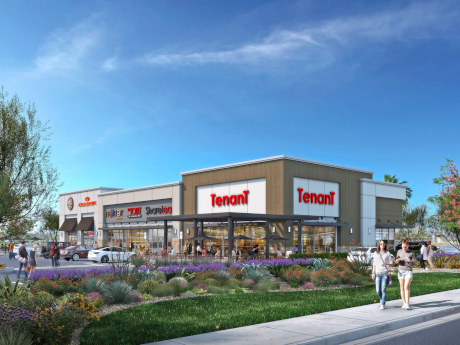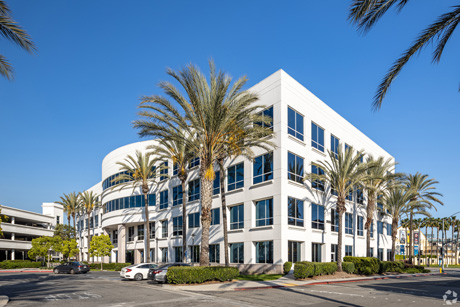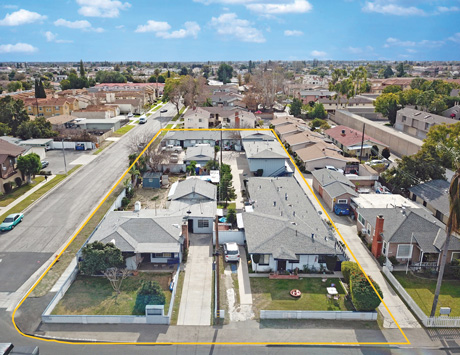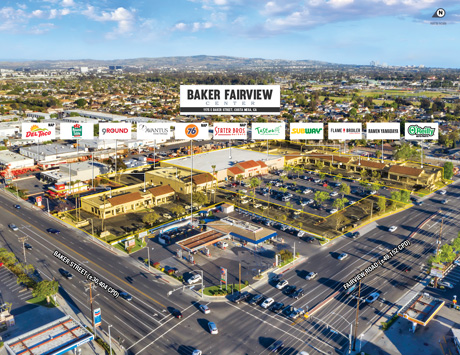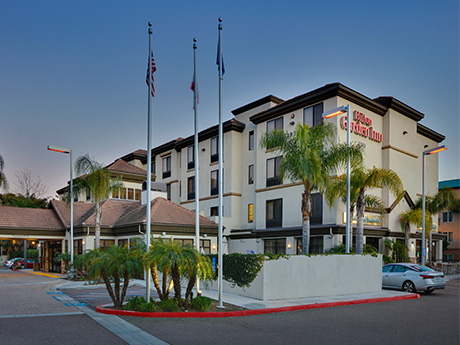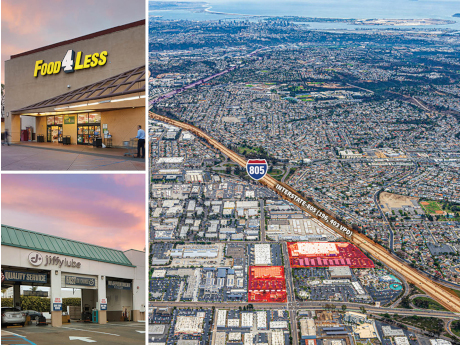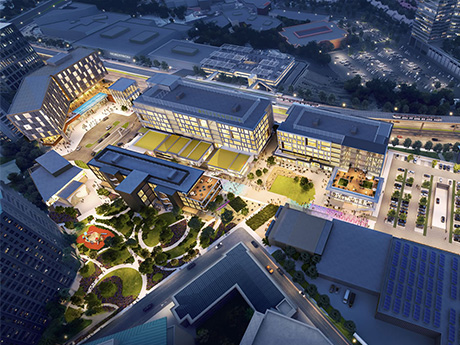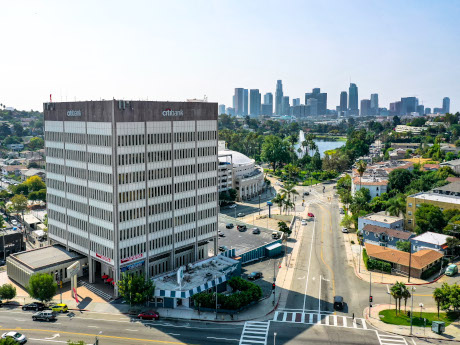By Ryan Gast, Vice President, Ontario/Inland Empire, CBRE We are currently seeing a very strong leasing market in San Bernardino County, which is mostly driven by the amount of new housing developments in the market and the lack of new retail product being built. Tenants are hungry for the top-tier shopping centers, which has driven the vacancy rates down and rents up in a market where there seems to be a lot of uncertainty in the air. Some of the most active retail categories include the fast feeders (QSRs), gas stations and car wash groups. Discount retailers also hold great appeal, particularly due to inflation. The market has also seen an increase in activity from fitness users who stopped dead in their tracks during 2020 and 2021 due to COVID. As active retailers go, Stater Bros, Hobby Lobby, Burlington, 99 Ranch Market, Ross and Planet Fitness have all recently inked deals in the area. Sprouts, Quick Quack, Shell, Raising Cane’s and Dutch Bros Coffee also remain active. Many of these retailers are seeking high-growth areas where there has been an influx of residential development nearby. In terms of developers, Lewis Retail, Wood Investments and Rich Development are some of the …
Market Reports
By Steve Roppel, Senior Vice President, Allied Commercial Real Estate Encompassing 62 square miles, San Bernardino is the governmental seat of San Bernardino County, the largest county in the world at more than 21,000 square miles. About 86,000 people alone work within the city, per the 2020 Census. The largest industries are retail (12,280 people), transportation and warehousing (11,164 people) and health (9,603 people). Of the six largest office buildings, only one is occupied by traditional multiple commercial tenants. The others are occupied by the county, city, courts, non-profits and the University of Loma Linda. The only large office building presently proposed is a county office building of 307,000 square feet. San Bernardino was historically a vibrant metropolitan whose image has become tarnished over the years. It is famous for its affiliation with Route 66, which runs through the city and allowed many people to emigrate to the Golden State. The first original McDonald’s restaurant – now a museum – was opened in San Bernardino in 1940. To restore the former luster and recognize the potential for San Bernardino, local governments have pulled together on several fronts. Multiple recent infrastructure improvements and redevelopments were completed and planned for San Bernardino, …
By Mike Adams, Managing Director, Stream Realty Partners The state of office is transitioning to a desire for dynamic spaces. Tenants in the Orange County office market are gravitating toward assets that act and function like hotels. They are seeking out the newest buildings and the most unique office environments. This is evidenced through leasing activity being the strongest in the Irvine/Tustin Legacy and Irvine Spectrum submarkets. Employers are looking for a reason to bring their workforce back to the office and are recruiting high-caliber employees. One way to do this is through office space. Creative office space is still in high demand — and won’t likely change soon. Companies focused on employee retention want to create an “Instagram-worthy” type office environment. They are looking for office space that will create a buzz and function as a recruiting tool. Office buildings are unique assets that facilitate collaboration, culture and training. This interest in new development signifies a flight to quality of office assets — for landlords and tenants alike. Several trends related to the desire for quality include: Hotelization — office spaces that act and function as hotels Biophilic design — the concept of connecting a building with nature Proptech — using innovative technology and …
By Pat Swanson, Executive Vice President, Colliers Orange County Lack of supply remains most evident in the Orange County multifamily market, with vacancies trending near historic lows at 2.3 percent. As supply dwindles, we have seen the pressure felt by investors to ramp up and hunt for the elusive value-add opportunities in this marketplace. Many profit hunters actively seek properties with upside in rent, accessory dwelling unit (ADU) potential and inadequacies as part of the existing management. A recent example is a 12-unit, single-story Garden Grove asset on a large parcel of land that was purchased below replacement cost. The Florida-based seller operated and managed the building remotely and desired to move his assets closer to home. Due to the long-distance operations, the local buyer felt they could control the property more efficiently by adding improvements to generate higher rents, while also taking advantage of the open spaces that could accommodate additional ADU units. This was a perfect fit for both parties, and we were able to execute the deal. It shows the type of value-add complex that has become highly sought after. Like the investors who flocked to Garden Grove, similar buyers have reevaluated their wants for quality Class A …
By John R. Read, Senior Vice President, CBRE National Retail Partners-West It’s critical to go back to the basics in times of ever-increasing uncertainty. It is not new news that we are currently seeing inflation at a 40-year high, significantly higher interest rates and weaker economic growth expectations, including more talks of a pending recession, which is driving uncertainty in the U.S. market. These factors require us to consider a market’s fundamentals. For attractive fundamentals, look no further than Orange County’s retail market. Orange County’s unemployment rate was 2.7 percent in April 2022, down from a revised 3.1 percent in March 2022, and below the year-ago estimate of 6.8 percent. With California’s unadjusted unemployment rate at 3.8 percent and the nation at 3.3 percent (for the same period), Orange County outperformed both metrics. The county’s leisure and hospitality sector added 6,200 jobs, with 74 percent of these added between March and April of 2022, the most job additions of any sector. Food services and drinking establishments provided most of the employment increase in the subsector, with 4,000 more jobs. Arts, entertainment and recreation also added 1,600 jobs. Orange County boasts about 1,246 arts, entertainment and recreation destinations, along with 7,993 accommodations and …
Western Real Estate Business sat down with two hotel experts to discuss what the future holds for tourism-heavy markets like San Diego. They include Robert A. Rauch, managing partner of the locally based Hilton Campus Del Mar and Fairfield Inn & Suites San Marcos and a faculty associate at Arizona State University, as well as Gary H. London, senior principal of Carlsbad, Calif.-based London Moeder Advisors, which prepares commercial market and financial feasibility studies and analyzes real estate investments for prospective investors. WREB: How is San Diego’s hospitality and tourism industries stacking up to other markets that are similar in either size or tourist popularity? London: Because of an ongoing slowdown in international travel, many American travelers divert to San Diego as a favored domestic destination. San Diego’s tourism sector has been very strong since the perceived end of the pandemic-induced recession almost a year ago. Rauch: Over the nine months spanning from July 2021 to March 2022, San Diego has been in the top five of the 25 largest U.S. markets in all three categories of occupancy, average rate and RevPAR. Hotel occupancy comes in at 67.6 percent, average rate per night is $179.85 and RevPAR (revenue per available room) stands at …
By Chad Iafrate, Executive Director, and Phil Lyons, Managing Director, Cushman & Wakefield Retail leasing and investment sales transaction volumes continue to increase in 2022. This growth trend began to surge in the second part of 2021 following the pandemic recovery. Retail vacancy rates in San Diego County have decreased quarter over quarter to 5.9 percent, with vacancy lowest among power centers and strip centers. Asking rental rates, meanwhile, have increased across the county. This is primarily driven by significant rent growth at lifestyle centers (+5 percent from the previous quarter) and neighborhood centers (+2.8 percent). All major retail use categories seem to be back in expansion mode after four consecutive quarters of positive absorption. Pent-up consumer demand, stimulus and liquidity have all helped fuel growth plans in the retail sector with tenants continuing to try to make up for the lost year during the 2020 pandemic-related lockdowns. Suburban shopping centers have been the beneficiary of the work-from-home model as employees who would typically frequent retailers near their offices have pivoted to restaurants and shops closer to their residences. Investor confidence in retail centers also continues to increase, most notably from rising REIT activity and exchange buyers. Local retail investment …
By Nellie Day All of Los Angeles County might have been under the same restrictions throughout the pandemic, but their emergence from this period reveals a lot about the localized retail environments. “Los Angeles’ retail market has weathered COVID better than many other markets around the country,” says Matthew May, founder of May Realty Advisors in the Los Angeles submarket of Sherman Oaks, Calif. “However, the recovery has favored a diverse group of suburban markets.” Certain Suburbs Stand Out Markets like East Hollywood/Silver Lake, Inglewood/South LA and Santa Clarita boasted the highest 12-month rolling net absorptions in the county, according to CoStar — something May doesn’t believe was expected. “LA is known as a melting pot and this is reflected in the geographic and ethnic makeup of the top submarkets based on net absorption,” he says. “Vacancies in many of the suburbs were substantially less than in the Central Business Districts and tony retail areas from Beverly Hills to Abbott Kinney. These emerging markets were quite a surprise.” On the other hand, metro markets like Santa Monica, Downtown LA and Koreatown each had more than 100,000 square feet of negative absorption. Santa Monica’s Third Street Promenade has been one of …
By John Hickman, Managing Director, NewMark Merrill San Diego may be California’s second most populous county, but you wouldn’t know it by strolling through one of its many business districts. The county has grown up since its early days as a small military outpost, yet today its hundreds of communities and neighborhoods still impart a small-town feel. The retail real estate market reflects an intimate beach town vibe with a tightly knit brokerage and landlord community. Brokers and investors can cover the market with a limited footprint, while many retailers can achieve a major presence with a handful of locations. This is opposed to the dozens of locations they may require in other California markets, such as Los Angeles, Orange County and the Bay Area. And big, national brands aren’t the only retailers finding success — 98 percent of firms in San Diego are small businesses. Retailers in San Diego are open to taking chances on new concepts and structuring different types of leases. They’re also willing to pay slightly higher rent to gain access to the area’s strong demographics and limited supply of new shopping centers. This uniqueness provided resiliency during the pandemic and will contribute to a thriving …
By Jerry Holdner, Southern California Region Lead, Avison Young The Greater Los Angeles office sector is experiencing a fragmented and slow recovery post-pandemic as the fallout is being addressed in various ways by office tenants, investors and owners. The first quarter of 2022 ended with a 15.4 percent office vacancy rate, which was up from 15 percent at the end of 2021. It is also up from the previous high of 13.1 percent that was recorded in 2010. We started to see several companies require their employees to return to work at least in some capacity in the first quarter, which typically included a hybrid schedule. With gas prices soaring and an extremely competitive job market, hybrid situations have been significant bargaining chips for employers to attract and retain employees. That said, we don’t see leasing demand returning to pre-COVID levels for at least 12 to 24 months or longer. Office occupiers have and will continue to evaluate both their short- and long-term occupancy strategies. With all indicators pointing to hybrid work remaining indefinitely, office users are seeking to reduce their footprints. This typically involves a flight to quality as office rents are low and concessions are consistently on the table for new leases …


